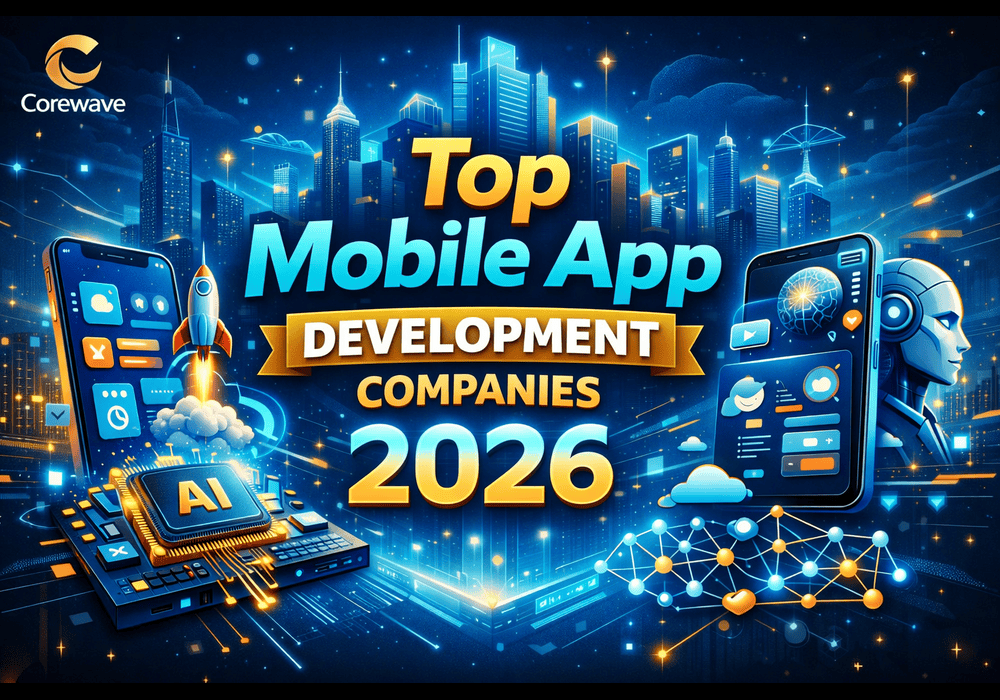Choosing the proper framework is crucial to making sure both the performance of the development technique and the fulfillment of the final product. With the speedy pace of technological advancements, developers now have an array of powerful cell app improvement frameworks at their disposal. These frameworks allow for building go-platform apps, improving performance, lowering improvement time, and delivering top notch consumer stories.
As we flow into 2025, there are numerous standout cell app improvement frameworks that are shaping the enterprise. Below, we are able to dive into the ten maximum terrific frameworks that are expected to dominate cell app development this year.
1. React Native
React Native is still one of the most popular frameworks for building cellular programs. Developed by using Facebook, this framework allows developers to use JavaScript and React to construct apps that are absolutely native on both iOS and Android platforms. The number one appeal of React Native lies in its ability to write down as soon as and set up on more than one system, saving time and resources.
Why it stands proud:
Cross-platform development: React Native enables builders to create apps that run on both iOS and Android with a shared codebase.
Fast development: The framework’s warm-reload feature speeds up the improvement manner by allowing developers to peer code modifications right away.
Large network aid: React Native has a vibrant network that constantly contributes to its boom, providing a wealth of resources and 0.33-party libraries.
Native performance: Unlike hybrid frameworks, React Native affords near-local performance, thats vital for apps requiring high responsiveness.
2. Flutter
Flutter, advanced by Google, is one of the maximum thrilling mobile development frameworks to emerge in recent years. Flutter lets developers build natively compiled applications for cellular, internet, and computing devices from an unmarried codebase. It makes use of the Dart programming language, and its standout function is its ability to deliver stunning and pretty customized consumer interfaces with minimum effort.
Why it stands proud:
Rich UI components: Flutter offers a tremendous variety of pre-designed widgets that assist in developing clean, excessive-performance apps.
Cross-platform improvement: With one codebase, developers can deploy apps across various structures including iOS, Android, web, and computing devices.
Hot reload: Flutters warm reload characteristic makes the improvement manner faster, allowing for immediate feedback after code changes.
Native performance: Flutter affords high performance on each iOS and Android due to its direct compilation to native machine code.
3. Xamarin
Xamarin, a Microsoft-owned framework, is one of the leading tools for developing move-platform applications. Xamarin permits builders to jot down applications in C# and percentage maximum of the code across iOS, Android, and Windows. With Xamarin, apps can get entry to native device APIs, making sure they have the equal performance and features as native apps.
Why it stands proud:
Shared codebase: Xamarin permits a single codebase for iOS, Android, and Windows apps, enhancing maintainability and reducing development time.
Access to local APIs: Xamarin presents complete get entry to platform-precise APIs, permitting developers to create apps that have the identical appearance, experience, and overall performance as local apps.
Microsoft integration: Xamarin seamlessly integrates with Microsoft’s developer equipment, along with Visual Studio, presenting an acquainted environment for .NET builders.
4. Ionic
Ionic is a popular open-supply framework used to build pass-platform cellular applications. Built on the pinnacle of internet technology which includes HTML, CSS, and JavaScript, Ionic permits developers to create remarkable cellular apps that run seamlessly on iOS, Android, and the web. It’s built around Angular, an effective JavaScript framework, which makes it smooth to create dynamic and interactive user interfaces.
Why it stands out:
Web generation-based: Ionic allows developers acquainted with net development to fast transition to mobile app improvement.
Pre-constructed additives: It gives a rich library of pre-constructed UI additives, making it smooth to create apps with a sophisticated appearance.
Cross-platform guide: Ionic supports constructing apps for iOS, Android, and the web, making it a versatile choice for developers aiming to reach an extensive target audience.
Active network: The Ionic framework boasts an energetic network that frequently contributes to new tools, extensions, and aid.
5. NativeScript
NativeScript is a powerful open-source framework for building local mobile programs using JavaScript, TypeScript, or Angular. Unlike other hybrid frameworks, NativeScript allows developers to get right of entry to native device APIs immediately, offering a local-like enjoy with high performance.
Why it stands out:
Native overall performance: NativeScript lets in developers to put in writing simply native packages with complete right of entry to platform APIs, making sure foremost performance.
Cross-platform: Developers can write shared code for both iOS and Android programs.
Supports Angular
6. Swiftic
Swiftic is a cell app improvement platform designed for non-builders, permitting organizations to create their own apps with minimal coding skills. Formerly referred to as Como, Swiftic presents an smooth-to-use interface for constructing custom cellular apps, making it an incredible option for small agencies, eating places, or neighborhood stores.
Why it sticks out:
No coding required: Swiftic is a no-code app builder, permitting customers to create fully useful apps without writing any code.
Customizable templates: It gives diverse templates tailored to industries like retail, restaurants, and real estate, making it clean to create apps that have healthy unique wishes.
Affordable pricing: Swiftic is a low cost answer for companies seeking to create apps without making an investment heavily in development.
7. PhoneGap
PhoneGap, an Adobe product, is a broadly used open-supply framework for constructing cell packages using web technologies like HTML, CSS, and JavaScript. It provides developers with a fixed set of APIs to get entry to local device capabilities such as the camera, GPS, and storage, whilst allowing for pass-platform deployment.
Why it stands out:
Cross-platform compatibility: PhoneGap enables developers to create packages for iOS, Android, and other systems from an unmarried codebase.
Web technology: Developers can use their internet development abilities to create mobile apps, making it easy to transition from web to cell development.
Open-source: PhoneGap is open-source, allowing for flexibility and customization in app improvement.
8. Kotlin Multiplatform Mobile (KMM)
Kotlin Multiplatform Mobile (KMM) is a particularly new framework that allows developers to write down shared code for iOS and Android apps the usage of Kotlin, a present day programming language that runs at the Java Virtual Machine (JVM). KMM enables builders to proportion business common sense at the same time as still preserving local performance for both systems.
Why it stands proud:
Shared codebase: Developers can percentage not unusual code for commercial enterprise logic, community calls, and facts managing among iOS and Android apps.
Native performance: KMM allows builders to put in writing platform-particular code for the person interface, making sure most reliable overall performance and a local person revel in.
Seamless integration with existing apps: Kotlin Multiplatform can be without difficulty incorporated into present native apps, enabling teams to regularly transition to Kotlin.
9. AppGyver
AppGyver is a no-code platform that empowers users to create effective mobile and internet apps without writing a single line of code. It offers a drag-and-drop interface with a wide range of pre-constructed additives, allowing users to build applications unexpectedly.
Why it stands out:
No-code platform: AppGyver permits corporations and people without a coding enjoy to build sophisticated cellular apps.
Visual improvement: The platform offers a visual interface that simplifies the app improvement process, making it best for prototyping or for groups that want to create apps quickly.
Cross-platform: Apps created with AppGyver can be deployed across more than one structure, along with iOS, Android, and the net.
10. Tauri
Tauri is a rising framework that lets in developers build fast and steady move-platform desktop and mobile programs using internet technologies like HTML, CSS, and JavaScript. Unlike different hybrid frameworks, Tauri specializes in performance and security, supplying a Rust-primarily based backend with an internet frontend.
Why it stands out:
Lightweight and fast: Tauri apps are distinctly lightweight and rapid because of the usage of Rust for the backend, which guarantees minimum overhead.
Cross-platform: Tauri helps both laptop and cellular app development, making it a flexible desire for builders.
Security-first technique: Tauri locations a sturdy emphasis on protection, supplying builders with gear to create safe and stable programs.
Conclusion
As cellular app improvement continues to adapt, these 10 frameworks stand out for his or her precise functions, overall performance, and simplicity of use. Whether you’re constructing an employer-stage app or a simple prototype, choosing the right framework will decide how quickly and efficiently you can carry your app to the marketplace. React Native and Flutter lead the price for pass-platform improvement, at the same time as frameworks like Kotlin Multiplatform Mobile and Xamarin cater to developers looking for a native revel in with shared codebases. Additionally, no-code systems like Swiftic and AppGyver have made it easier for non-builders to create their very own cellular apps.
With so many frameworks to be had, it’s crucial to select the one that pleasant fits your mission necessities and your teams skill set. In 2025, the possibilities for cellular app improvement are extra thrilling than ever.












